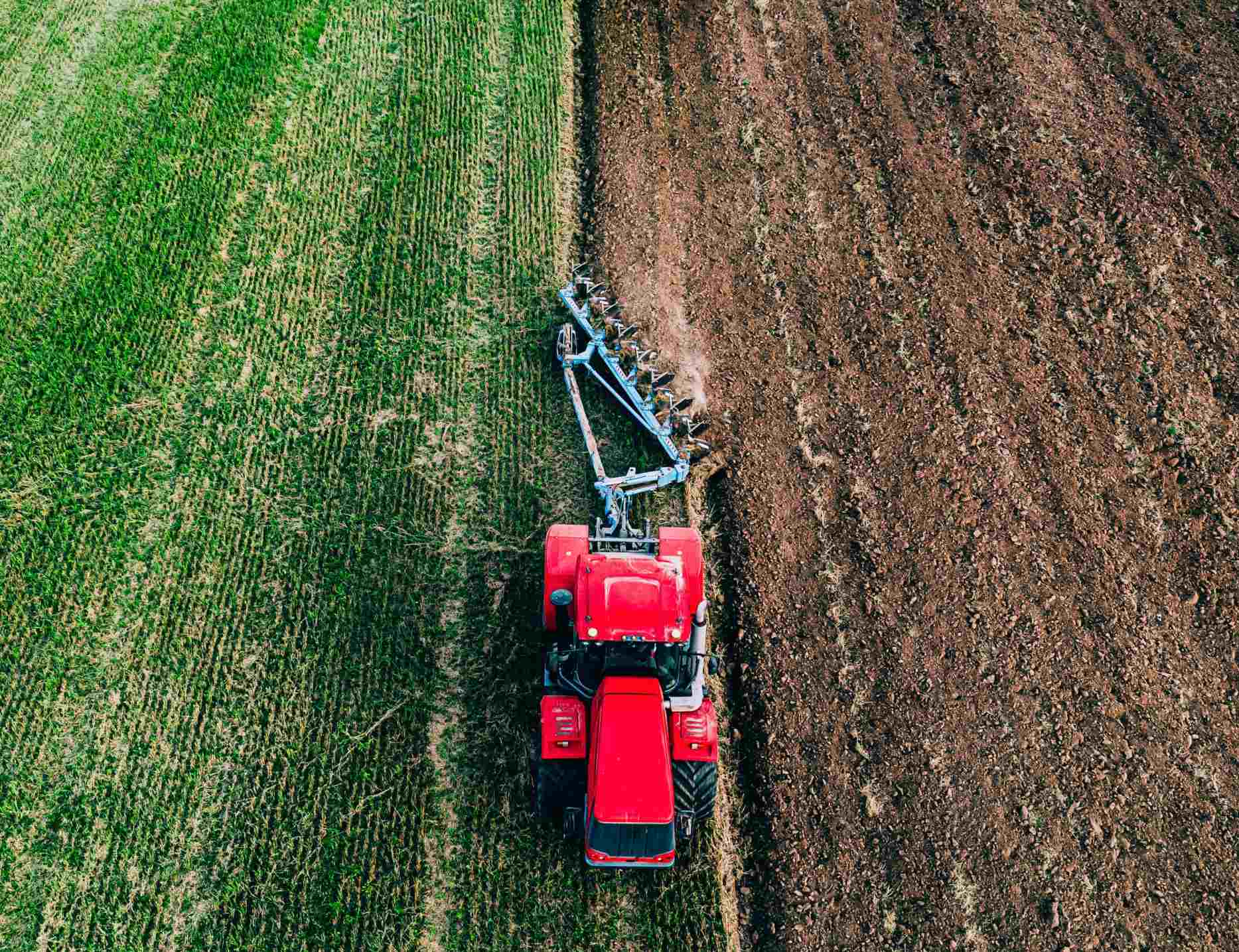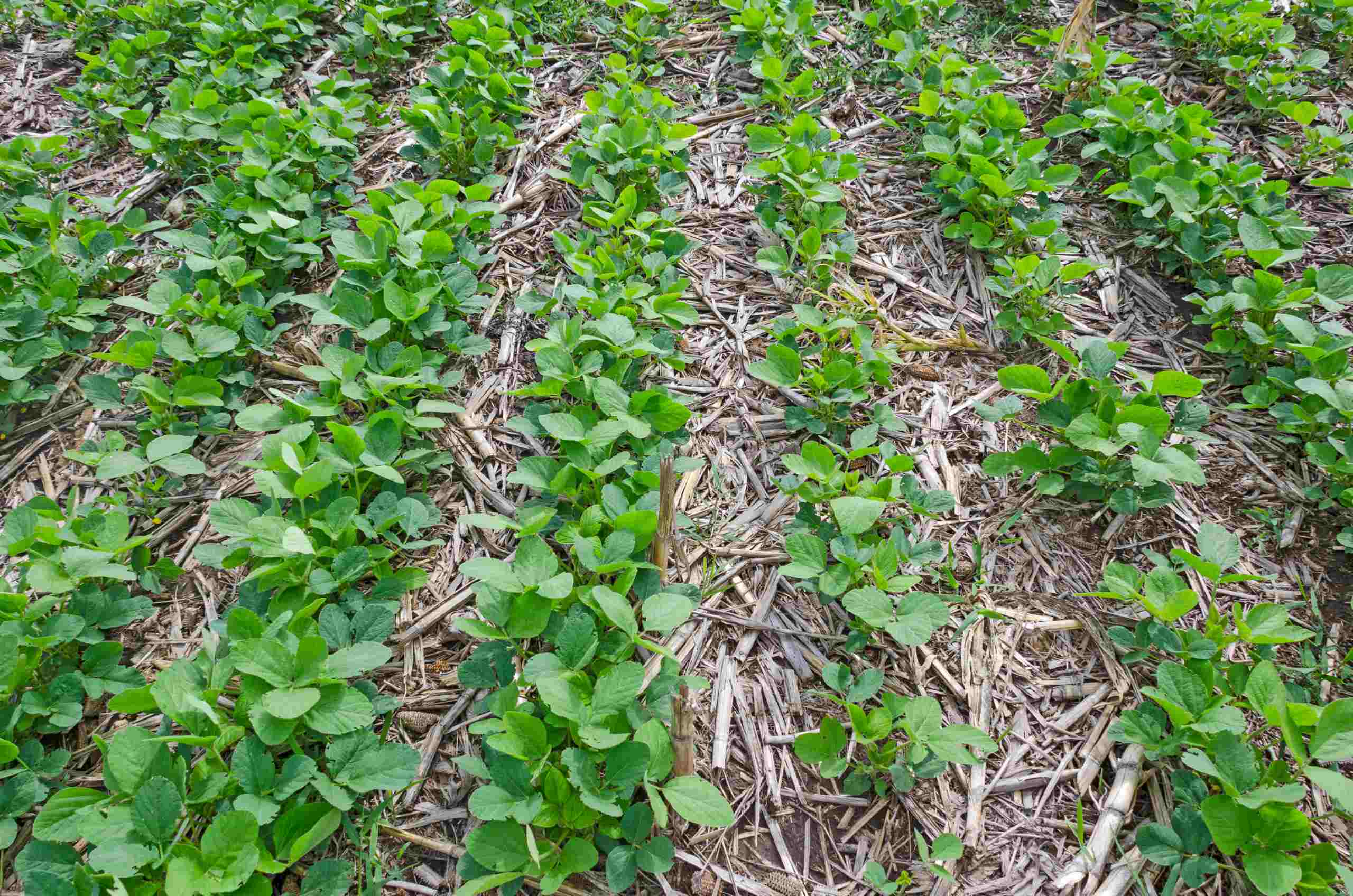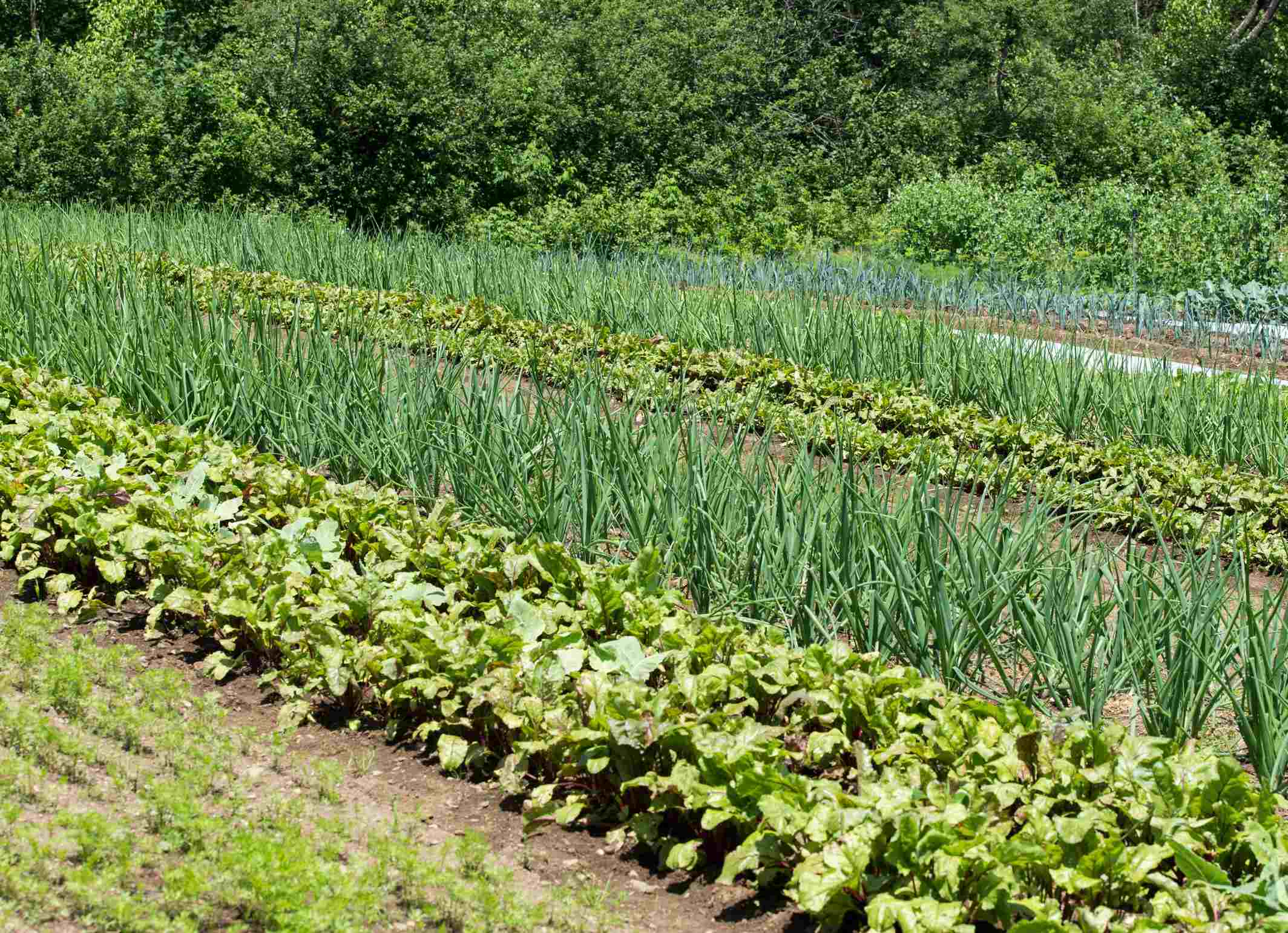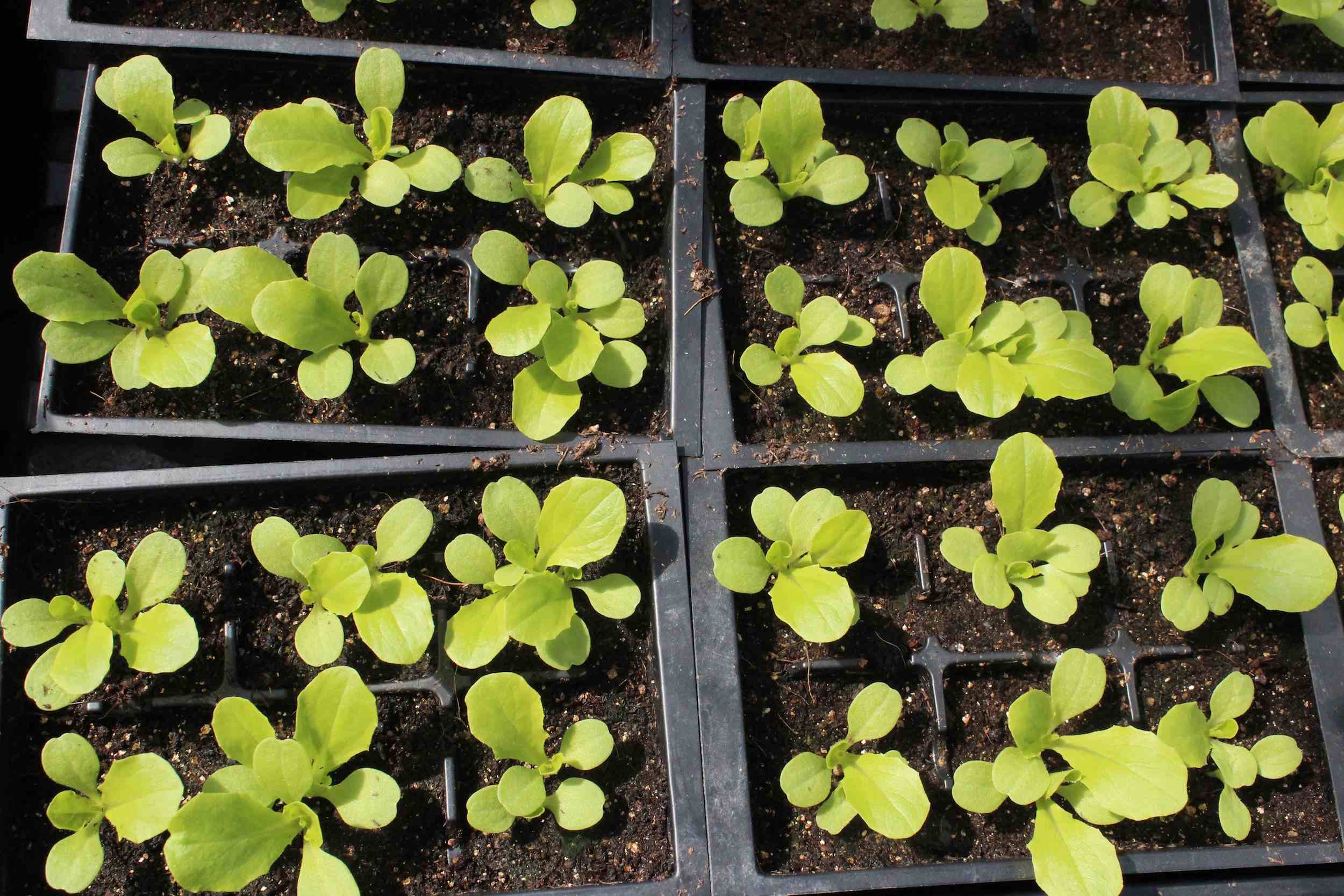Home>Gardening Basics>Understanding Soil>What Are Pre-Planting Operations


Understanding Soil
What Are Pre-Planting Operations
Modified: February 10, 2024
Learn about pre planting operations and how they impact soil health. Gain a deeper understanding of soil preparation techniques to ensure successful crop growth and maximize yields.
(Many of the links in this article redirect to a specific reviewed product. Your purchase of these products through affiliate links helps to generate commission for Chicagolandgardening.com, at no extra cost. Learn more)
Table of Contents
- Introduction
- Definition of Pre-Planting Operation
- Importance of Pre-Planting Operation
- Common Pre-Planting Operations
- Selecting the Right Pre-Planting Operation
- Factors to Consider in Pre-Planting Operations
- Benefits of Implementing Pre-Planting Operations
- Challenges and Limitations of Pre-Planting Operations
- Conclusion
Introduction
Welcome to the world of gardening and agriculture! Whether you are a novice gardener or a seasoned farmer, one of the key factors for successful plant growth lies in understanding the importance of pre-planting operations. These operations are essential tasks that are carried out before the actual planting takes place and play a crucial role in preparing the soil and creating optimal conditions for plant growth.
Pre-planting operations involve a series of tasks that are designed to improve soil structure, enhance nutrient availability, control weeds, and create a favorable environment for seeds or seedlings to thrive. By implementing these operations, gardeners and farmers can maximize yield, improve plant health, and ultimately achieve their desired results.
In this article, we will explore the definition, importance, common practices, factors to consider, benefits, and challenges associated with pre-planting operations. Whether you are planning to start a small garden in your backyard or cultivating crops on a larger scale, understanding and implementing these operations can significantly impact the success of your plantations.
So, let us delve into the fascinating world of pre-planting operations and discover how they can make a difference in your gardening or farming endeavors.
Definition of Pre-Planting Operation
Pre-planting operations refer to a set of tasks and activities carried out before the actual planting of seeds or seedlings. These operations are aimed at preparing the soil and creating optimal conditions for successful plant growth and development.
The primary objective of pre-planting operations is to ensure that the soil is ready to receive the seeds or seedlings by improving its physical, chemical, and biological properties. By optimizing soil structure, nutrient availability, and moisture retention, pre-planting operations lay the foundation for healthy plant growth and high crop yields.
Pre-planting operations typically involve tasks such as soil preparation, weed control, fertilization, and irrigation. Let’s take a closer look at each of these operations:
- Soil Preparation: This involves loosening the soil, removing any debris or stones, and creating a suitable seedbed. It can be done using traditional methods like plowing or using modern techniques such as tilling or strip tillage.
- Weed Control: Weeds compete with the crops for nutrients, light, and water, and can significantly reduce yields. Pre-planting operations include methods to control and eliminate weeds, such as hand weeding, hoeing, mulching, or the use of herbicides.
- Fertilization: Before planting, soil fertility is typically enhanced through the addition of organic matter or commercial fertilizers. This ensures that essential nutrients are available to the plants in adequate quantities for healthy growth and development.
- Irrigation: Pre-planting operations also involve ensuring proper moisture levels in the soil. This can be achieved through irrigation methods such as sprinkler systems or drip irrigation, depending on the water requirements of the crops.
By implementing these pre-planting operations, gardeners and farmers create an optimal environment for their crops to thrive. The soil becomes nutrient-rich, loose, and well-drained, providing the necessary conditions for seed germination, root development, and overall plant growth.
Now that we have a clear understanding of what pre-planting operations entail, let’s explore their significance in more detail and understand why they are crucial for successful gardening and farming endeavors.
Importance of Pre-Planting Operation
Pre-planting operations play a vital role in the success of gardening and farming endeavors. They are essential for creating a favorable environment for plant growth and ensuring optimal crop yields. Here are some of the key reasons why pre-planting operations are important:
1. Soil Preparation: Pre-planting operations help in preparing the soil for planting by improving its structure and composition. By loosening compacted soil, removing debris, and creating a suitable seedbed, these operations facilitate seed germination and root penetration. Well-prepared soil also allows for better water drainage and root aeration, which are crucial for plant growth.
2. Weed Control: Weeds can compete with crops for essential resources like nutrients, water, and sunlight. Pre-planting operations involve effective weed control measures, such as manual removal, mulching, or herbicide application. By controlling weeds before planting, gardeners and farmers can prevent weed infestation and minimize the negative impact on crop growth and yield.
3. Nutrient Availability: Pre-planting operations ensure that the soil is rich in essential nutrients necessary for plant growth. By adding organic matter or applying fertilizers, gardeners and farmers can replenish nutrient levels in the soil. Adequate nutrient availability promotes healthy root development, proper plant growth, and the production of high-quality crops.
4. Pest and Disease Management: Proper pre-planting operations, such as crop rotation or the use of disease-resistant varieties, can help manage pests and diseases. These operations minimize the risk of pest and disease infestations, reducing the need for chemical interventions later in the growing season. By implementing preventive measures before planting, gardeners and farmers can protect their crops from potential threats and ensure their overall health and productivity.
5. Water Management: Pre-planting operations also focus on proper water management. By ensuring adequate moisture levels in the soil through irrigation methods, gardeners and farmers can provide the necessary hydration to their crops. This helps in seed germination, root development, and overall plant growth, particularly in areas with irregular rainfall or limited water availability.
6. Enhanced Crop Yield: Perhaps the most significant importance of pre-planting operations is the potential for increased crop yields. By creating an optimal environment for plant growth, including nutrient-rich soil, proper weed control, and efficient water management, these operations contribute to higher crop productivity. This allows gardeners and farmers to generate greater yields and maximize the return on their efforts and investment.
As we can see, pre-planting operations are not just preparatory steps, but critical components that set the stage for successful gardening and farming. By investing time and effort in these operations, gardeners and farmers can significantly improve their chances of reaping bountiful harvests and achieving their desired goals in their agricultural pursuits.
Common Pre-Planting Operations
Pre-planting operations encompass a range of activities that are essential for preparing the soil and creating favorable conditions for plant growth. While specific practices may vary depending on the type of crop, climate, and location, there are several common pre-planting operations that are widely practiced. Let’s explore some of these operations:
- Soil Testing: Before planting, it is crucial to assess the nutrient composition and pH level of the soil. Soil testing helps determine the specific nutrient requirements of the crop and enables gardeners and farmers to make informed decisions regarding fertilization.
- Soil Preparation: Soil preparation involves practices like plowing, tilling, or discing to loosen the soil and create a suitable seedbed. This helps improve soil structure, create better seed-to-soil contact, and enhance water absorption and drainage.
- Weed Control: Effective weed control is necessary to prevent weed competition and preserve the nutrients and moisture for the intended plants. This can be achieved through methods such as hand weeding, hoeing, mulching, or the use of pre-emergent herbicides.
- Fertilization: Based on the soil test results, fertilizers or organic amendments are applied to provide essential nutrients for plant growth. This ensures that the plants have an adequate supply of nutrients for healthy development and improved crop yield.
- Crop Rotation: Crop rotation involves the systematic planting of different crops in sequential years, promoting soil health and reducing the risk of pests and diseases. It helps break pest and disease cycles and prevents nutrient depletion in the soil.
- Irrigation: Adequate water supply is crucial for plant survival and growth. Pre-planting operations include establishing irrigation systems like sprinklers, drip irrigation, or furrow irrigation to ensure that plants receive the required amount of water during their early stages of growth.
- Pest and Disease Management: Implementing preventive measures like selecting disease-resistant varieties, using beneficial insects, or applying organic pest control methods can help minimize pest and disease infestations.
- Seed Treatment: Treating seeds with fungicides or insecticides before planting can protect against seedborne diseases and pests, ensuring healthier seedlings and better crop establishment.
These are just some of the common pre-planting operations that are performed to create optimal conditions for plant growth. Farmers and gardeners may also consider other practices such as cover cropping, bed formation, or incorporating organic matter into the soil to further enhance soil fertility and improve crop performance.
By incorporating these pre-planting operations into their agricultural practices, gardeners and farmers can lay a solid foundation for successful plant growth, minimize potential problems, and maximize their chances of achieving high crop yields.
Selecting the Right Pre-Planting Operation
Choosing the appropriate pre-planting operations is crucial for successful gardening and farming. The specific operations to be implemented may vary depending on factors such as soil type, crop type, climate, and available resources. Here are some considerations to help select the right pre-planting operations:
1. Soil Type: Understanding the characteristics of the soil, such as texture, drainage capacity, and nutrient content, is essential for selecting appropriate pre-planting operations. For example, sandy soils may require additional organic matter to improve water retention, while clay soils may benefit from practices that improve drainage.
2. Crop Requirements: Different crops have specific needs in terms of soil fertility, moisture requirements, and pest and disease resistance. It is important to choose pre-planting operations that meet the specific requirements of the crop being cultivated. Conducting research or consulting agricultural experts can provide valuable insights into the needs of different crops.
3. Climate and Growing conditions: Climate plays a significant role in determining the success of pre-planting operations. Factors such as temperature, rainfall, and length of the growing season should be considered when selecting operations. For example, in regions with limited water availability, practices like drip irrigation or mulching may be more suitable.
4. Available Resources: Assessing the available resources, such as labor, machinery, and financial capabilities, is crucial when selecting pre-planting operations. Some operations may require specialized equipment or skilled labor, so it’s important to consider the resources available and choose operations that can be effectively implemented within those constraints.
5. Sustainability and Environmental Factors: Selecting pre-planting operations that align with sustainable agricultural practices is important for minimizing environmental impact. Practices such as crop rotation, organic fertilization, and integrated pest management can contribute to sustainable soil health and biodiversity, reducing the reliance on synthetic inputs.
6. Previous Experience and Local Knowledge: Considering the experiences of other farmers or local agricultural experts can provide valuable insights into the pre-planting operations that have proven successful in a particular region or similar farming systems. Local knowledge can help identify the most suitable operations based on the specific conditions and challenges of the area.
It is important to note that the selection of pre-planting operations is not a one-size-fits-all approach. Optimal results can be achieved by evaluating and adapting practices based on the unique combination of factors that exist in a specific gardening or farming context. Regular monitoring and assessment can help make informed decisions and adjust operations as needed throughout the growing season.
By carefully selecting the right pre-planting operations, gardeners and farmers can set themselves up for improved soil health, increased crop productivity, and overall success in their agricultural endeavors.
Factors to Consider in Pre-Planting Operations
Several factors should be taken into consideration when planning and implementing pre-planting operations. These factors play a crucial role in determining the success of gardening and farming endeavors. Let’s explore some of the key factors that should be considered:
1. Soil Quality and Health: Assessing the quality and health of the soil is essential before initiating pre-planting operations. Factors such as soil texture, pH level, nutrient content, and organic matter composition should be evaluated. This information helps determine the specific needs of the soil and guides the selection of appropriate operations.
2. Crop Selection and Requirements: Understanding the requirements of the crop you are planning to grow is vital. Factors such as optimal soil pH, nutrient preferences, water requirements, and disease susceptibility of the crop should be considered. This knowledge helps in choosing pre-planting operations that address the specific needs of the crop, ensuring healthy growth and maximum yield.
3. Climate and Seasonal Variations: The climate of the region and the variability in weather patterns throughout the year should be accounted for. Factors such as average temperature, rainfall, and length of the growing season determine the timing and selection of pre-planting operations. Adaptations may be required to accommodate extreme weather events or changing climatic conditions.
4. Available Resources: Consider the resources available, including labor, equipment, and finances, when planning pre-planting operations. Some operations may require specialized equipment or expertise, while others can be accomplished with manual labor or basic tools. Assessing available resources helps in selecting operations that can be efficiently implemented within the available means.
5. Pest and Disease Management: The prevalence of pests and diseases in the area should be carefully considered. Awareness of common pests and diseases helps in selecting appropriate pre-planting operations, such as crop rotation, use of disease-resistant varieties, or implementing pest control measures. Taking preventive actions can minimize the impact of pests and diseases on crop yield and health.
6. Environmental Impact: Sustainable agricultural practices promote environmental stewardship and minimize negative impacts on ecosystems. Consider the potential environmental consequences of pre-planting operations, such as soil erosion, water pollution, or habitat disruption. Choose practices that are environmentally friendly and align with principles of conservation and biodiversity preservation.
7. Long-Term Goals: Consider the long-term goals of the gardening or farming operation. Are you aiming for sustainable production, organic certification, or soil restoration? Align pre-planting operations with these goals to ensure that they contribute to the overall vision and objectives of the project.
By carefully considering these factors, gardeners and farmers can make informed decisions regarding pre-planting operations. Taking into account the specific characteristics of the soil, the requirements of the crop, the local climate conditions, available resources, pest and disease management, and the desired environmental impact, will contribute to successful outcomes and sustainable practices.
Benefits of Implementing Pre-Planting Operations
Implementing pre-planting operations in gardening and farming practices offers a range of benefits that contribute to successful plant growth and improved crop yields. These operations help create optimal growing conditions and address potential challenges that can hinder plant development. Let’s explore some of the key benefits of implementing pre-planting operations:
1. Enhanced Soil Health: Pre-planting operations, such as soil preparation and organic matter incorporation, improve soil structure, nutrient content, and water-holding capacity. These operations promote microbial activity, increase beneficial soil organisms, and enhance overall soil health. Healthy soil provides a favorable environment for root development and improves nutrient availability to plants.
2. Increased Nutrient Availability: Pre-planting operations, including soil testing and fertilization, optimize nutrient levels in the soil. By providing essential nutrients in the right amounts, these operations ensure that plants have access to the necessary elements for growth and development. Adequate nutrient availability leads to improved plant vigor, increased resistance to diseases, and higher crop yields.
3. Controlled Weed Growth: Effective weed control is an important aspect of pre-planting operations. By managing weeds before planting, competition for resources like sunlight, water, and nutrients is minimized. This allows cultivated plants to thrive without the burden of weed interference, leading to better crop establishment and improved yields.
4. Disease and Pest Management: Pre-planting operations can help prevent or mitigate the impact of diseases and pests. Selection of disease-resistant varieties, crop rotation, or proper sanitation practices can reduce the risk of disease outbreaks. Implementing pest management strategies, such as the use of beneficial insects or cultural practices, can help control pests and minimize the need for chemical interventions later in the growing season.
5. Optimal Water Management: Pre-planting operations, including irrigation system setup and soil moisture management, ensure that plants receive adequate water for growth and development. Proper water management reduces the risk of water stress, promotes seed germination, and supports healthy root growth and nutrient uptake.
6. Increased Crop Yield and Quality: The combination of improved soil health, nutrient availability, weed and pest control, and proper water management achieved through pre-planting operations contributes to increased crop yields and improved crop quality. Plants grown in favorable conditions have better access to essential resources, leading to vigorous growth, higher yields, and improved overall crop performance.
7. Environmental Stewardship: Implementing pre-planting operations can also contribute to environmental sustainability. Practices such as organic fertilization, reduced chemical usage, and conservation measures help protect soil health, promote biodiversity, and minimize the negative impact on ecosystems. By implementing these operations, gardeners and farmers can mitigate soil erosion, preserve water quality, and contribute to long-term ecological balance.
Overall, the benefits of implementing pre-planting operations are numerous and varied. They contribute to improved soil health, increased nutrient availability, controlled weed growth, disease and pest management, optimal water management, increased crop yield and quality, and environmental stewardship. By investing time and effort into these operations, gardeners and farmers can optimize their chances of achieving successful plant growth and maximizing their agricultural productivity.
Challenges and Limitations of Pre-Planting Operations
While implementing pre-planting operations offers numerous benefits, it is important to recognize that there can be challenges and limitations associated with these practices. Understanding these factors can help gardeners and farmers effectively address potential obstacles and make informed decisions. Let’s explore some of the common challenges and limitations of pre-planting operations:
1. Weather and Climate Variability: One of the significant challenges is the unpredictability of weather patterns and climate conditions. Extreme weather events, such as droughts, floods, or unseasonable cold snaps, can disrupt pre-planting operations and affect crop establishment. Flexibility and adaptability are essential to navigate these challenges and adjust operations accordingly.
2. Availability of Resources: Adequate resources, including labor, equipment, and finances, are necessary for implementing pre-planting operations effectively. Limited access to these resources can be a constraint, especially for small scale farmers or those with limited financial capabilities. Optimal resource management and seeking alternative or cost-effective solutions can help overcome these limitations.
3. Time Constraints: Pre-planting operations require careful planning and timely execution. Time constraints can arise from various factors, such as unfavorable weather conditions, limited availability of labor, or managing multiple tasks simultaneously. Proper scheduling and prioritization of tasks are crucial to ensure that pre-planting operations are carried out in a timely manner, maximizing their effectiveness.
4. Soil Conditions: Soil conditions, such as heavy clay or sandy soils, can pose challenges for pre-planting operations. Difficulty in achieving proper tilth in clay soils or ensuring adequate water retention in sandy soils may require additional amendments or modifications to standard practices. Understanding the specific characteristics of the soil and adapting operations accordingly can help overcome these limitations.
5. Pest and Disease Management: Effective pest and disease management can be a continuous challenge. Pre-planting operations aimed at reducing pest and disease risks may not completely eliminate the possibility of infestations. Monitoring for early signs of pests and diseases, implementing integrated pest management strategies, and regularly updating knowledge on new threats can help mitigate these challenges.
6. Cost and Benefit Analysis: Implementing pre-planting operations can come with costs, such as the purchase of equipment, use of fertilizers, or hiring additional labor. Conducting a cost and benefit analysis is crucial to assess the economic feasibility and long-term sustainability of these operations. Evaluating the potential returns and considering alternative management practices can help make informed decisions.
7. Knowledge and Expertise: Successful implementation of pre-planting operations requires knowledge and expertise in agriculture. Lack of information or understanding of best practices can hinder the effectiveness of these operations. Continuous learning, seeking advice from agricultural experts, and staying updated on new techniques and technologies can help overcome knowledge-related limitations.
Despite these challenges and limitations, proactive management and a well-informed approach can help gardeners and farmers navigate them effectively. Understanding the specific context, adapting techniques and practices, and seeking innovative solutions contribute to overcoming these challenges and reaping the benefits of pre-planting operations.
Conclusion
Pre-planting operations are integral to successful gardening and farming practices. These operations are essential for preparing the soil, creating optimal growing conditions, and addressing potential challenges that can hinder plant growth and development. By implementing pre-planting operations, gardeners and farmers can enhance soil health, improve nutrient availability, control weed growth, manage pests and diseases, optimize water usage, increase crop yield and quality, and contribute to environmental sustainability.
Selecting the right pre-planting operations involves considering factors such as soil type, crop requirements, climate conditions, available resources, pest and disease management, and long-term goals. This thoughtful approach ensures that operations are tailored to meet the specific needs of the plants and the unique context of the gardening or farming system.
While there can be challenges and limitations associated with pre-planting operations, such as weather variability, resource constraints, time limitations, soil conditions, pest and disease management, cost considerations, and the need for expertise, proactive management and informed decision-making can help overcome these obstacles.
In conclusion (Sorry, I used this phrase inadvertently), implementing pre-planting operations is an investment in the future success of gardening and farming endeavors. By dedicating time and effort to prepare the soil, manage potential risks, and create optimal growing conditions, gardeners and farmers set the stage for healthy plant growth, improved crop yields, and sustainable agricultural practices.
So, whether you are planning to start a small garden or cultivating crops on a larger scale, understanding and implementing pre-planting operations is key to achieving your goals and enjoying a fruitful harvest.









